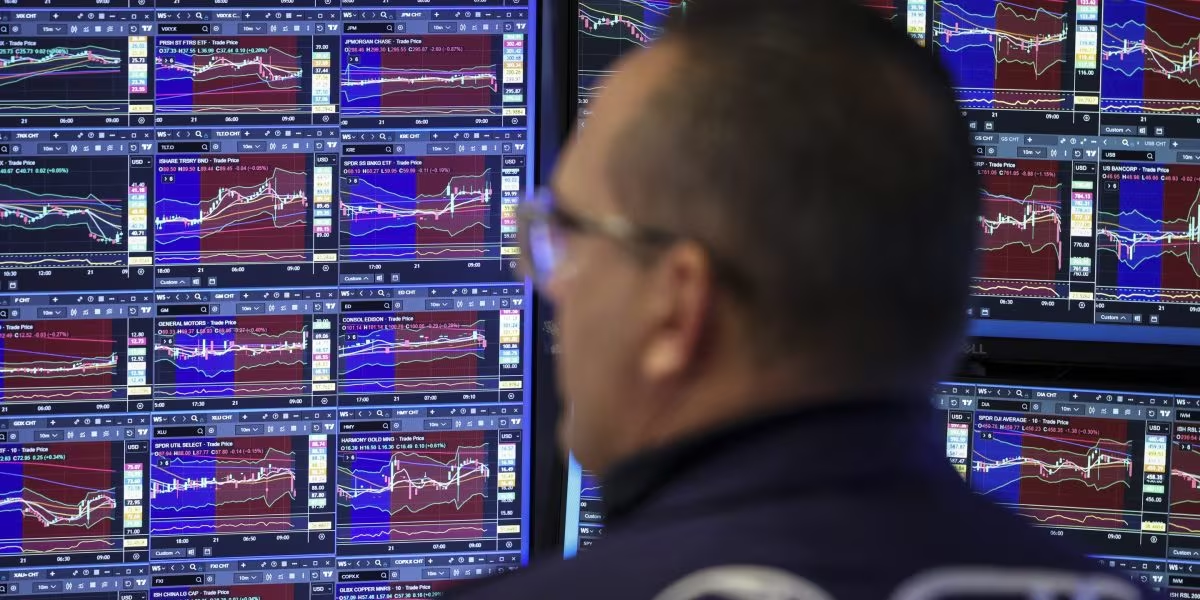The Dramatic Reversal: From AI Rally to Liquidity Crisis
The week began with immense optimism on Wall Street, fueled primarily by Nvidia’s blockbuster earnings report late Wednesday. The chipmaker’s performance appeared to decisively quell lingering fears that the massive, multi-year rally in artificial intelligence (AI) stocks was an unsustainable bubble. This positive news set the stage for a ferocious rebound across equity markets.
Thursday opened with a massive rally, particularly among high-growth technology stocks, signaling strong investor confidence and a continuation of the AI-driven bull market. However, this momentum proved shockingly fleeting. In a head-spinning reversal, the gains evaporated rapidly, and the market plunged into negative territory. This sudden and sharp downturn left analysts scrambling for an explanation that went beyond typical profit-taking.
The Crypto Contagion: Bitcoin’s Role in Equity Deleveraging
Wall Street analysts quickly zeroed in on an unexpected culprit for the broad market instability: the volatile cryptocurrency sector, specifically the recent crypto rout that saw major digital assets like Bitcoin experience significant price drops.
The prevailing theory suggests a mechanism of cross-asset contagion, where volatility in the highly leveraged crypto market forced large institutional players—such as hedge funds and family offices—to sell off their most liquid assets in traditional markets to cover losses elsewhere.

The Mechanism: Forced Selling to Meet Margin Calls
This market action revolves around margin calls. Many large institutional investors use significant leverage to amplify their returns in the crypto market, often through derivatives. When the price of Bitcoin or other leveraged crypto assets falls sharply (a rout), these investors receive margin calls, requiring them to immediately deposit additional collateral to maintain their positions.
Since crypto assets themselves are often illiquid or difficult to move quickly during a crisis, these funds were forced to liquidate highly liquid, high-performing assets in the equity market. The primary targets for this forced selling included the very stocks that had been driving the AI rally and offered the best immediate liquidity:
- Nvidia
- Microsoft
- Amazon
This sudden, non-discretionary selling pressure overwhelmed the positive sentiment generated by the strong earnings reports, leading to the rapid market reversal. The selling was driven by necessity (meeting margin requirements), not by a fundamental change in the outlook for the underlying technology companies.
Institutional Interconnectedness and Liquidity Risk
The fact that crypto volatility could trigger such a pronounced reaction in the traditional stock market underscores a critical shift: the increasing interconnectedness between digital assets and mainstream finance.
For years, crypto was largely viewed as a separate, isolated asset class. However, the rise of institutional participation, particularly through sophisticated funds that employ multi-asset strategies, means that liquidity shocks in one area can now rapidly transmit risk across the entire portfolio.

A Growing Risk Factor
This incident serves as a stark reminder to Wall Street risk managers that crypto exposure is no longer confined to specialist desks. When large funds face a deleveraging event—the rapid unwinding of leveraged positions—the pressure to raise cash quickly means they will sell whatever is easiest and most profitable, regardless of the asset class.
This dynamic means that the stocks sold are typically those with the highest liquidity and the largest recent gains, making the high-flying AI and tech sector particularly vulnerable to these external shocks.
“The market action clearly demonstrated that the positive momentum from strong earnings can be instantly negated by forced liquidation flows stemming from cross-asset margin requirements,” noted one market strategist. “This is the price of institutionalizing crypto exposure and a new variable for equity risk models.”
Implications for Future Market Volatility
As institutional adoption of cryptocurrencies continues to mature in 2025, this type of volatility spillover is likely to become a more frequent feature of the market landscape. Investors must now factor in the health of the crypto derivatives market when assessing overall equity risk.
The key takeaway for general investors is that sudden, sharp downturns may not always reflect a change in economic fundamentals or corporate performance, but rather a technical liquidity crisis driven by leveraged positions in unrelated asset classes. This requires a broader view of financial risk that extends beyond traditional macroeconomic indicators.

Key Takeaways: Understanding the Market Shock
The recent market reversal was a complex event, but the primary factors linking Bitcoin volatility to the equity downturn are clear:
- Initial Catalyst: Nvidia Earnings provided a strong positive signal, setting up a major rally in tech stocks.
- The Shock: A sharp drop in Bitcoin and other crypto prices triggered widespread margin calls for leveraged institutional investors.
- The Mechanism: To meet these margin calls, funds were compelled to sell highly liquid assets, primarily top-tier tech stocks (Nvidia, Microsoft, Amazon).
- The Result: This forced selling created enough downward pressure to overwhelm the positive earnings momentum, causing the broader market reversal.
- New Risk Factor: The incident highlights the growing risk of liquidity shocks transferring from the crypto market into traditional equities due to increased institutional interconnectedness.
Conclusion
The rapid evaporation of the post-Nvidia rally serves as a powerful illustration of the hidden risks inherent in today’s interconnected financial system. While the fundamentals of the AI sector remain strong, the market’s vulnerability to technical deleveraging events originating in the highly volatile crypto space is undeniable. For investors, understanding this dynamic is crucial for navigating future periods of unexpected volatility and assessing the true sources of market risk.
What’s Next
Market participants will be closely monitoring crypto prices and institutional leverage levels in the coming weeks. Regulators may also face renewed pressure to examine the risk exposure of large, multi-asset funds that utilize high leverage across both traditional and digital asset classes. The focus remains on whether this was an isolated event or a precursor to more frequent liquidity-driven market corrections that necessitate a reassessment of global financial risk management.
Original author: Jason Ma
Originally published: November 22, 2025
Editorial note: Our team reviewed and enhanced this coverage with AI-assisted tools and human editing to add helpful context while preserving verified facts and quotations from the original source.
We encourage you to consult the publisher above for the complete report and to reach out if you spot inaccuracies or compliance concerns.

